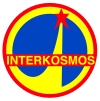Soyuz 40
| COSPAR ID | 1981-042A |
|---|---|
| SATCAT no. | 12454 |

 | |
The Soyuz 40 mission was a 1981 Soviet manned spaceflight and the last time the Soyuz 7K-T spacecraft was used. It was a collaboration between the Soviet Union and Romania.
Crew
| Position | Crew | |
|---|---|---|
| Commander | Leonid Popov Second spaceflight | |
| Research Cosmonaut | Dumitru Prunariu First spaceflight | |
Backup crew
| Position | Crew | |
|---|---|---|
| Commander | Yuri Romanenko | |
| Research Cosmonaut | Dumitru Dediu | |
Mission parameters
- Mass: 6800 kg
- Perigee: 198.1 km
- Apogee: 287 km
- Inclination: 51.6°
- Period: 89.06 minutes
Mission highlights
16th expedition to Salyut 6. 9th international crew. Carried intercosmos cosmonaut from Romania. Last Soyuz Ferry flight; ended the first phase of the Intercosmos program, which concentrated on placing citizens of Soviet bloc states into space. In all, nine Intercosmos missions were launched between 1978 and 1981.
Soyuz 40 was the last of the original Soyuz spacecraft (due to its replacement by the Soyuz-T) and the last Soyuz spacecraft to dock with Salyut 6. It also ended the first phase of the Intercosmos program by carrying Romanian cosmonaut Dumitru Prunariu and Soviet cosmonaut Leonid Popov to the station. Prunariu studied Earth’s magnetic field. Earth observations had to be delayed until the last day of his flight, when Salyut 6 at last passed over Romania in daylight. During this time the crew also tested the station’s orientation system.


